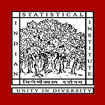Many-objective feature selection for motor imagery EEG signals using differential evolution and support vector machine
Document Type
Conference Article
Publication Title
International Conference on Microelectronics, Computing and Communication, MicroCom 2016
Abstract
Processing of the movement related task under planning by artificial means provides a means to those people whose natural modality of performing the task is bottlenecked by physical disability or neuro-motor disorders. Electroencephalography (EEG) based Brain-Computer Interfacing (BCI) systems can be defined to be a non-muscular pathway to operate rehabilitative devices using motor imagery signals captured from the motor activation areas in the brain. Supervised learning can help in prediction of motor imagery actions by processing raw EEG signals. However, dimension of the feature space plays a crucial role in this process. Large dimensional features not only increase the computational complexity but also the presence of redundant features causes reduction in classification accuracy. In this work, we intend to select the relevant features from the feature vector obtained by Power Spectrum Density estimation of the left/right motor imagery signals. BCI Competition 2008-Graz dataset B has been used as the source of raw EEG data. To achieve this goal, we have used single-objective as well as many-objective version of Differential Evolution which optimizes the classifier's performance in terms of five metrics obtained from the Confusion Matrix. Support Vector Machine is used for fitness evaluation of the chosen feature subset as well as for classification of mental states. This work demonstrates the superiority of many-objective Differential Evolution in improving the accuracy due to reduction in feature dimension from an average of 60.56% to 82.60% while processing time of a test EEG sample reduces from 6.1 milliseconds to 5.6 milliseconds. The results obtained in this work are validated using Friedman Test.
DOI
10.1109/MicroCom.2016.7522574
Publication Date
7-25-2016
Recommended Citation
Pal, Monalisa and Bandyopadhyay, Sanghamitra, "Many-objective feature selection for motor imagery EEG signals using differential evolution and support vector machine" (2016). Conference Articles. 744.
https://digitalcommons.isical.ac.in/conf-articles/744

